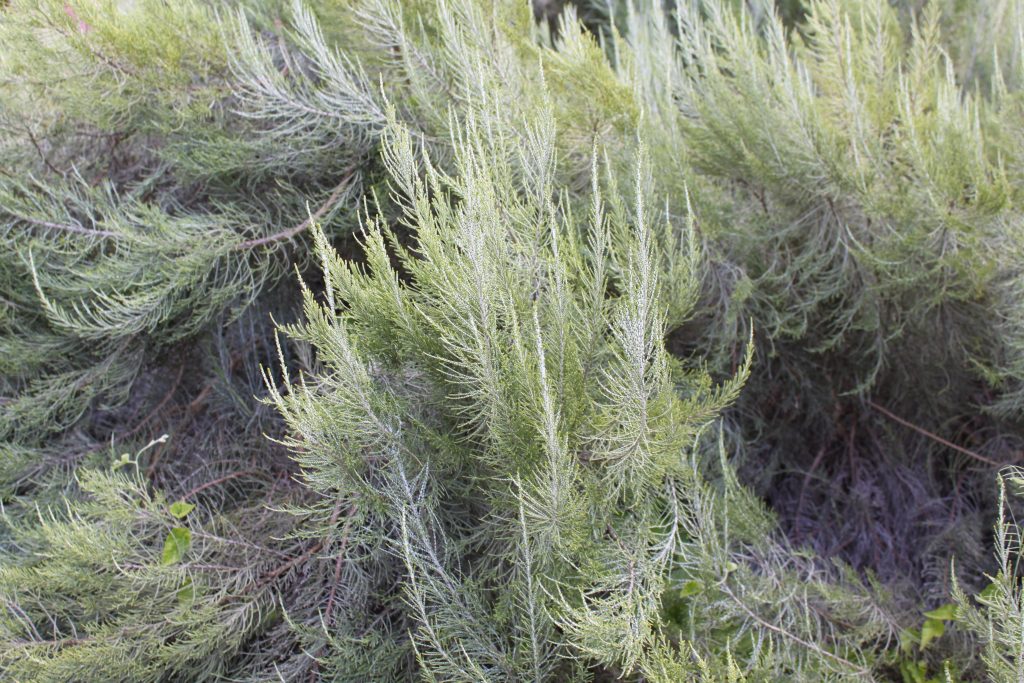
Endemic to South Africa, this shrub or small tree is a member of the aster family, Asteraceae, that also includes daisy, yarrow, and lettuce. It has a deep taproot and a multibranched stem that grows up to 6.5′ tall and has a smooth grayish bark. The stems carry numerous thin twigs bearing tiny, triangular leaves tightly pressed to the twig and fine white hairs that produce a gray woolly appearance. In early winter, tiny, inconspicuous, brown flowerheads appear at the tips of the twigs and give way to seed heads with numerous seeds, each with a with feathery pappus that facilitates wind dispersal. The bush is soft and fluffy looking as the seeds are shed in late winter due to the opening of the pale brown chaffy bracts surrounding the seed heads. The plants have medicinal properties and are drought tolerant. They can be used used for land reclamation but are unpalatable to livestock and can become weedy. The genus name, Elytropappus, comes from the Greek elytron, meaning sheath, and pappos, meaning down or fluff, and refers to the small cup-like rim around the base of the feathery pappus. The specific epithet, rhinocerotis, refers to the true or imagined connection between the plant and rhinos.
Type: Shrub or small tree
Outstanding Feature: Drought resistance
Form: Upright oval
Growth Rate: Rapid
Bloom: Tiny, brown inconspicuous flowerheads in early winter
Size: 6.5′ H
Light: Full sun
Soil: Clay or loam, medium moist to dry, well-drained
Hardiness: Zones 9-10
Care: Low maintenance
Pests and Diseases: Generally healthy but may suffer from fungal diseases in humid conditions; aphids
Propagation: Smoke treated seed, tip or heel cuttings in late summer
Outstanding Selections: A silvery white cultivar is available.
Photo Credit: Wikipedia